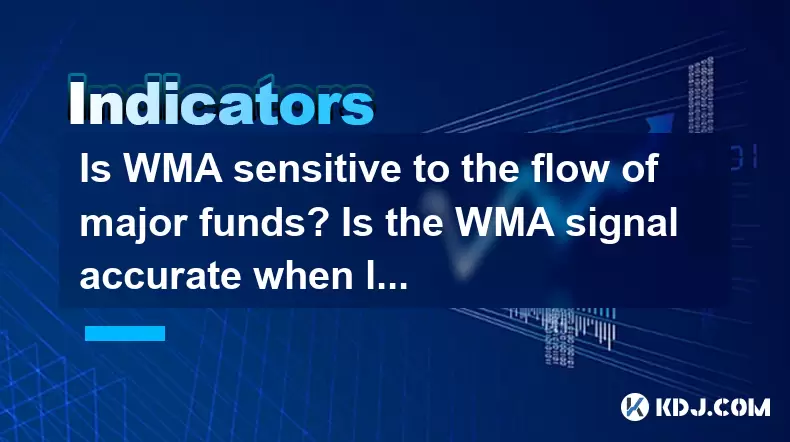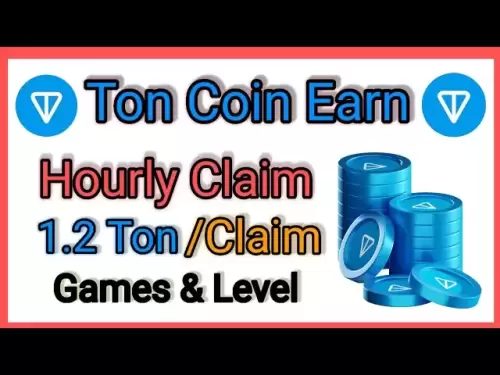-
 Bitcoin
Bitcoin $119900
0.94% -
 Ethereum
Ethereum $4633
9.35% -
 XRP
XRP $3.254
3.60% -
 Tether USDt
Tether USDt $0.9998
-0.04% -
 BNB
BNB $837.0
3.48% -
 Solana
Solana $194.3
10.87% -
 USDC
USDC $0.9998
-0.02% -
 Dogecoin
Dogecoin $0.2370
5.91% -
 TRON
TRON $0.3528
1.79% -
 Cardano
Cardano $0.8460
9.05% -
 Chainlink
Chainlink $23.61
12.06% -
 Hyperliquid
Hyperliquid $44.91
3.99% -
 Stellar
Stellar $0.4475
2.93% -
 Sui
Sui $3.899
5.78% -
 Bitcoin Cash
Bitcoin Cash $620.7
6.74% -
 Hedera
Hedera $0.2602
4.59% -
 Ethena USDe
Ethena USDe $1.000
-0.03% -
 Avalanche
Avalanche $24.84
8.52% -
 Litecoin
Litecoin $131.0
9.17% -
 Toncoin
Toncoin $3.509
3.47% -
 UNUS SED LEO
UNUS SED LEO $9.170
2.15% -
 Shiba Inu
Shiba Inu $0.00001360
4.82% -
 Uniswap
Uniswap $11.66
5.28% -
 Polkadot
Polkadot $4.180
7.93% -
 Ethena
Ethena $0.8242
2.31% -
 Dai
Dai $0.9998
-0.04% -
 Cronos
Cronos $0.1630
-3.04% -
 Pepe
Pepe $0.00001224
9.07% -
 Bitget Token
Bitget Token $4.464
1.16% -
 Aave
Aave $321.9
9.17%
Is WMA sensitive to the flow of major funds? Is the WMA signal accurate when large orders are abnormal?
WMA's sensitivity to major fund flows aids traders in spotting trends early, but its signals can be misleading during short-lived abnormal large orders.
Jun 05, 2025 at 09:14 am

The Weighted Moving Average (WMA) is a popular technical indicator used by traders in the cryptocurrency market to analyze price trends and make informed trading decisions. Understanding how sensitive WMA is to the flow of major funds and whether its signals remain accurate during abnormal large orders is crucial for effective trading. This article will delve into these aspects, providing detailed insights into the behavior of WMA under various market conditions.
Understanding Weighted Moving Average (WMA)
Weighted Moving Average (WMA) is a type of moving average that assigns a higher weighting to more recent data points. Unlike the Simple Moving Average (SMA), which assigns equal weight to all values, WMA emphasizes recent price movements, making it more responsive to new information. The formula for WMA is:
[ \text{WMA} = \frac{n \times Pn + (n-1) \times P{n-1} + \ldots + 2 \times P_2 + 1 \times P_1}{n + (n-1) + \ldots + 2 + 1} ]
Where ( P_n ) represents the price at the nth period, and ( n ) is the total number of periods.
Sensitivity of WMA to Major Fund Flows
WMA's sensitivity to the flow of major funds can significantly impact its effectiveness as a trading tool. Major fund flows refer to large transactions that can influence the market price of a cryptocurrency. When significant volumes of funds enter or exit the market, they can cause rapid price changes. Given WMA's emphasis on recent data, it is highly sensitive to these movements.
- When large funds enter the market, WMA will quickly reflect the price surge due to its weighting mechanism. Traders using WMA can identify these trends earlier than those using SMA, potentially capitalizing on the momentum.
- When large funds exit the market, WMA will also adjust rapidly, signaling a potential downturn. This can help traders exit positions before significant losses occur.
However, this sensitivity can be a double-edged sword. While it allows traders to react swiftly to market changes, it can also lead to false signals if the major fund flows are short-lived or part of a larger, more complex market dynamic.
Accuracy of WMA Signals During Abnormal Large Orders
The accuracy of WMA signals during abnormal large orders is a critical concern for traders. Abnormal large orders are transactions that deviate significantly from the usual trading volume and can be caused by various factors, such as institutional trading, market manipulation, or news events.
- When an abnormal large order causes a sudden price spike, WMA will quickly adjust to reflect this change. However, if the price spike is short-lived and the market reverts to its previous state, the WMA signal may be misleading. Traders need to be cautious and consider additional indicators to confirm the validity of the signal.
- If an abnormal large order leads to a sustained price movement, WMA's sensitivity can be beneficial. The indicator will adapt to the new price trend, providing accurate signals that can help traders align their strategies with the market direction.
To enhance the accuracy of WMA signals during abnormal large orders, traders can use the following strategies:
- Combine WMA with other indicators: Using additional technical indicators, such as the Relative Strength Index (RSI) or Bollinger Bands, can provide a more comprehensive view of the market and help validate WMA signals.
- Monitor trading volume: High trading volume accompanying abnormal large orders can indicate a more significant market shift, increasing the reliability of WMA signals.
- Stay informed about market news: Understanding the context of abnormal large orders, such as news events or institutional activity, can help traders interpret WMA signals more accurately.
Practical Application of WMA in Trading
Applying WMA effectively in trading requires a clear understanding of its mechanics and limitations. Here's a step-by-step guide on how to use WMA for trading:
- Choose the right period: Select an appropriate period for the WMA based on your trading strategy. Shorter periods (e.g., 10-day WMA) are more sensitive to price changes, while longer periods (e.g., 50-day WMA) provide a smoother trend line.
- Plot the WMA on your chart: Use trading software or platforms to plot the WMA on your price chart. Ensure the WMA line is clearly visible and distinguishable from other indicators.
- Identify crossovers: Monitor the price in relation to the WMA line. A bullish signal occurs when the price crosses above the WMA, while a bearish signal occurs when the price crosses below the WMA.
- Confirm signals with other indicators: Before acting on a WMA signal, confirm it with other technical indicators. For example, if the WMA indicates a bullish trend, check if the RSI is also showing overbought conditions.
- Set stop-loss and take-profit levels: Once you enter a trade based on a WMA signal, set stop-loss and take-profit levels to manage risk and lock in profits.
Case Studies: WMA in Action
To illustrate the practical application of WMA, let's examine two case studies from the cryptocurrency market.
Case Study 1: Bitcoin Price Surge
In early 2021, Bitcoin experienced a significant price surge driven by institutional investments and widespread adoption. The 20-day WMA was used to track this trend:
- Before the surge, the price of Bitcoin was hovering around the WMA line, indicating a neutral trend.
- As large funds entered the market, the WMA quickly adjusted to reflect the price increase, providing early signals for traders to enter long positions.
- The sustained upward trend validated the WMA signals, allowing traders to ride the momentum and achieve substantial gains.
Case Study 2: Ethereum Flash Crash
In May 2021, Ethereum experienced a flash crash triggered by regulatory news and market sentiment. The 10-day WMA was used to analyze this event:
- Before the crash, the WMA was trending upwards, indicating a bullish market.
- When the flash crash occurred, the WMA rapidly adjusted to the lower price levels, signaling a potential bearish trend.
- However, the price quickly recovered, and the WMA signal turned out to be a false alarm. Traders who relied solely on the WMA might have exited their positions prematurely, missing out on the subsequent recovery.
Limitations and Considerations
While WMA is a valuable tool for traders, it has several limitations that must be considered:
- Sensitivity to short-term fluctuations: WMA's emphasis on recent data can lead to false signals during short-term market volatility.
- Lag in trend confirmation: Although WMA is more responsive than SMA, it still lags behind real-time price movements, which can result in delayed entries or exits.
- Dependence on period selection: The choice of period for the WMA significantly impacts its sensitivity and accuracy. Traders must experiment with different periods to find the most suitable one for their strategy.
Frequently Asked Questions
Q1: Can WMA be used effectively for day trading in the cryptocurrency market?
A1: Yes, WMA can be effective for day trading due to its sensitivity to recent price movements. However, traders should use shorter periods (e.g., 5-day or 10-day WMA) and combine it with other indicators to reduce the risk of false signals.
Q2: How does WMA compare to other moving averages like EMA and SMA?
A2: WMA is more responsive than SMA but less so than EMA. While WMA assigns higher weights to recent data, EMA uses an exponential smoothing factor, making it even more sensitive to recent price changes. SMA, on the other hand, assigns equal weight to all data points, resulting in a smoother but slower-moving average.
Q3: Is it possible to use WMA for long-term investment strategies in cryptocurrencies?
A3: Yes, WMA can be used for long-term investment strategies by selecting longer periods (e.g., 50-day or 200-day WMA). This approach helps filter out short-term volatility and focus on broader market trends, which is beneficial for long-term investors.
Q4: How can traders minimize the impact of false signals from WMA?
A4: To minimize the impact of false signals, traders should use WMA in conjunction with other technical indicators, such as RSI, MACD, or Bollinger Bands. Additionally, monitoring trading volume and staying informed about market news can help validate WMA signals and reduce the likelihood of false alarms.
Disclaimer:info@kdj.com
The information provided is not trading advice. kdj.com does not assume any responsibility for any investments made based on the information provided in this article. Cryptocurrencies are highly volatile and it is highly recommended that you invest with caution after thorough research!
If you believe that the content used on this website infringes your copyright, please contact us immediately (info@kdj.com) and we will delete it promptly.
- Unich's OTC Exchange: Surging with $1.2B Volume – What's the Hype?
- 2025-08-13 02:50:11
- MoonBull's Explosive Moves: Your Crypto Whitelist Ticket to Ride!
- 2025-08-13 02:30:11
- MAGACOIN Finance: Don't Miss the Presale Bonus!
- 2025-08-13 02:30:11
- Trump's Crypto Kingdom: $2.4 Billion and Counting
- 2025-08-13 02:50:11
- Solana, LSTs, and SEC Approval: A New Dawn for Crypto?
- 2025-08-13 02:55:12
- Bitcoin's Profit Surge: Unpacking the BTC Value Boom
- 2025-08-13 02:55:12
Related knowledge

What does it mean when the +DI and -DI cross frequently in the DMI indicator but the ADX is flattening?
Aug 11,2025 at 03:15am
Understanding the DMI Indicator ComponentsThe Directional Movement Index (DMI) is a technical analysis tool composed of three lines: the +DI (Positive...

What does it mean when the moving average, MACD, and RSI all send buy signals simultaneously?
Aug 11,2025 at 01:42pm
Understanding the Convergence of Technical IndicatorsWhen the moving average, MACD, and RSI all generate buy signals at the same time, traders interpr...

What does it mean when the price is trading above the SAR indicator but the red dots are densely packed?
Aug 09,2025 at 11:49pm
Understanding the SAR Indicator and Its Visual SignalsThe SAR (Parabolic Stop and Reverse) indicator is a technical analysis tool used primarily to de...

What does it mean when the candlestick chart forms a "Morning Star" but trading volume is sluggish?
Aug 12,2025 at 06:28pm
Understanding the Morning Star Candlestick PatternThe Morning Star is a three-candle bullish reversal pattern commonly observed in cryptocurrency pric...

What does it mean when the RSI indicator moves sideways for an extended period between 40 and 60?
Aug 10,2025 at 08:08am
Understanding the RSI Indicator in Cryptocurrency TradingThe Relative Strength Index (RSI) is a momentum oscillator widely used in cryptocurrency trad...

What does it mean when the MACD histogram continues to shorten but the price reaches a new high?
Aug 09,2025 at 09:29pm
Understanding the MACD Histogram and Its ComponentsThe MACD (Moving Average Convergence Divergence) indicator is a widely used technical analysis tool...

What does it mean when the +DI and -DI cross frequently in the DMI indicator but the ADX is flattening?
Aug 11,2025 at 03:15am
Understanding the DMI Indicator ComponentsThe Directional Movement Index (DMI) is a technical analysis tool composed of three lines: the +DI (Positive...

What does it mean when the moving average, MACD, and RSI all send buy signals simultaneously?
Aug 11,2025 at 01:42pm
Understanding the Convergence of Technical IndicatorsWhen the moving average, MACD, and RSI all generate buy signals at the same time, traders interpr...

What does it mean when the price is trading above the SAR indicator but the red dots are densely packed?
Aug 09,2025 at 11:49pm
Understanding the SAR Indicator and Its Visual SignalsThe SAR (Parabolic Stop and Reverse) indicator is a technical analysis tool used primarily to de...

What does it mean when the candlestick chart forms a "Morning Star" but trading volume is sluggish?
Aug 12,2025 at 06:28pm
Understanding the Morning Star Candlestick PatternThe Morning Star is a three-candle bullish reversal pattern commonly observed in cryptocurrency pric...

What does it mean when the RSI indicator moves sideways for an extended period between 40 and 60?
Aug 10,2025 at 08:08am
Understanding the RSI Indicator in Cryptocurrency TradingThe Relative Strength Index (RSI) is a momentum oscillator widely used in cryptocurrency trad...

What does it mean when the MACD histogram continues to shorten but the price reaches a new high?
Aug 09,2025 at 09:29pm
Understanding the MACD Histogram and Its ComponentsThe MACD (Moving Average Convergence Divergence) indicator is a widely used technical analysis tool...
See all articles

























































































